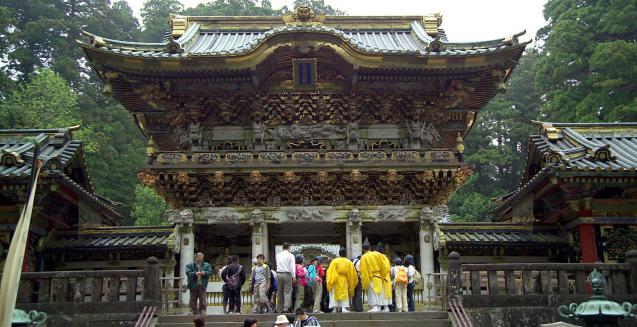
Located in the Tochigi Prefecture, The Shrines and Temples of Nikko refer to the 103 religious buildings within the complex of the two Shinto Shrines, Toshogu and Futarasan, and the Buddhist Temple, Rinnoji. The religious complex was built during the 17th century and is 50.8-hectare wide.
The complex consists of three elements: the twenty-three buildings of Futarasan shrine, the forty-two buildings of Toshogu shrine, and the thirty-eight buildings of the Rinno temple, for a total of 103 structures. All structures inside the site are well-maintained to preserve its value, not only for the monks and priests, but also for its visitors and patrons.
Surrounded by nature, a visit to the Shrines and Temples of Nikko will surely calm your mind.
Things to see
The Toshogu Shrine was built according to Tokugawa Ieyasu will. One of the famous structures to see in the shrine is the sculpture of the Three Wise Monkeys whose ears, eyes, and mouth are covered representing the saying “hear no evil, see no evil, speak no evil.” The small Karamon gate serves as an entrance to the main shrine where sculptures of the Chinese Legend “The Seven Sages of the Bamboo Grove” are depicted. It is considered as a National Treasure.
Futarasan Shrine, another Shinto Shrine in Nikko enshrines three deities: Okuninushi, Tagori Hime, and Ajisukitakahikone. The shrine has two Japanese swords which are considered as a National Treasure of Japan while the other 130 swords are designated as an Important Cultural Property. The sacred bridge or the Shinkyo, was once so holy that only the shogun was permitted to cross the bridge. The Futara Reisen or the Spiritual Fountain of Futara which can be found behind the main hall is said to cure eye diseases.
The Rinnoji Temple was established by Shodo, a Buddhist Monk. It became popular to monks who want solitude as the location of the temple is very secluded. Before, almost 500 buildings can be found in the temple complex but sadly, only 15 remain standing today. Visit the Sanbatsudo Hall which features the gold-leafed statues of Amida, Kannon with a thousand arms (Senju Kannon) and Kannon with a horse head (Bato Kannon). The 3rd shogun of the Tokugawa shogunate’s mausoleum, Tokugawa Iemitsu, can be found in the Taiyuin and is considered as a National Treasure.
The Shrines and Temples are best visited during the spring and autumn where the colors of the surroundings match the vivid colors of the structures.
From the JR Nikko Station, you may opt to go for a 30-40 minute walk to reach the destination or take the 10-minute bus for 310 Yen.
Some parts of the Shrines and Temples are under renovation but you can visit all 103 buildings for 1300 Yen.
The place is open from 8:00 AM to 5:00 PM from Monday to Sunday
Submit Itinerary
Signup
- Sign Up
- Already a member? Login Now!
